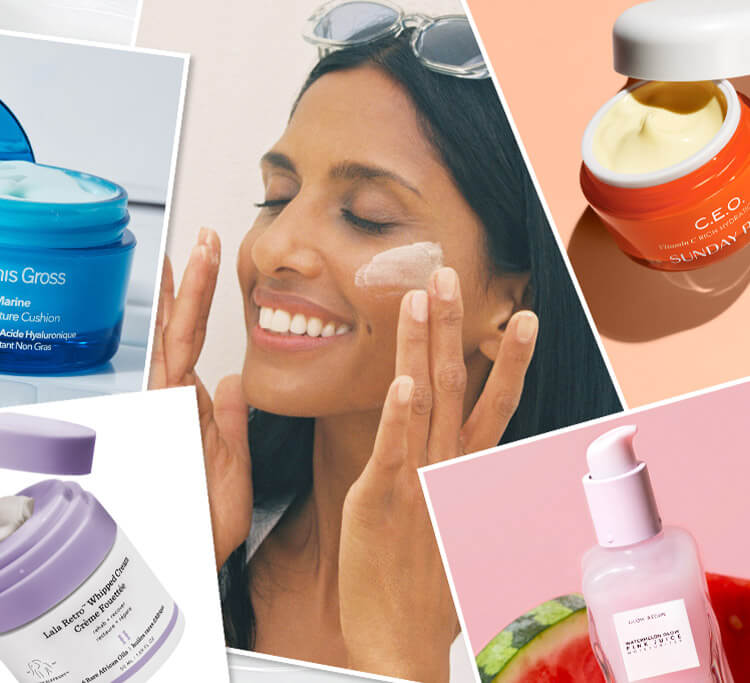
20 Mar DIFFERENT TYPES OF MOISTURIZERS AND WHEN TO USE THEM
Using the right moisturizer for your skin type can help your skin maintain a healthy balance of oils without becoming overly dry or oily. The right moisturizer can also minimize the likelihood of common skin problems like acne, visible redness, and irritation.
When it comes to choosing the right moisturizer for you, it’s important to understand your skin type. Do you have dry skin, sensitive skin, acne-prone or oily-prone skin, combination skin, or balanced skin?
The Importance of Moisturizing
Moisturizing your skin has several benefits, the most important being to protect your skin’s healthy cells from damage and irritation. When your skin is dehydrated, it works hard to produce extra oils to make up for the hydration loss. This overproduction of oils can damage the skin barrier and clogged pores, eventually leading to breakouts. By moisturizing your skin, you can reduce the chances of these skin problems and improve your complexion. Choosing the correct type of moisturizer is a vital part of proper skin hydration. By learning the differences between the three most common types, you can determine which moisturizer will work best on your skin.
Different Types of Moisturizers
When choosing a moisturizer, there are three common types: humectants, emollients, and occlusives.
Emollients: Are the most common type of moisturizer and work by filling in the cracks in your skin barrier to create a smooth and soft complexion.
Humectants: Often found in gel form, humectants work by drawing moisture to the top layer of your skin.
Occlusives: the most intense type of moisturization. An occlusive moisturizer provides a thick protective barrier, minimizing water loss.
Many facial moisturizers combine both emollients and humectants for maximum moisture. At the same time, occlusives are often used in anti-aging creams and applied on thicker-skinned parts of the body such as feet, knees, elbows, and hands.
When Should Each Type Be Used?
Knowing when to use each type of moisturizer will help your skin receive maximum benefits.
When to Use Emollients?
Ideal Skin Type: Normal, dry, and combination skin.
One of the essential types of moisturizers emollients, help smooth and soften the skin by restoring cracks in the skin barrier. Restoring these cracks helps minimize water loss and acts as a lubricating agent in many skincare products. While emollients are suitable for most skin types, they should be used sparingly when applied to naturally oily skin. When paired with oily skin, emollients may be too heavy and lead to more breakouts.
When to Use Humectants?
Ideal Skin Type: Oily skin
Humectants are great for moisturizing your skin. However, when using them for maximum hydration, humectants are best used with other moisturizers like emollients and occlusives.
When to Use Occlusives?
Ideal Skin Type: Dry, aging, and dehydrated skin.
Occlusives work by forming a protective layer on the surface of your skin. This protective layer creates a barrier that minimizes moisture loss while defending the skin from external irritants like wind, cold weather, pollen, and friction. Though occlusives share similar properties with other moisturizing agents, they’re one type of moisturizer that cannot be easily replaced. Their low water content means they’re less likely to harbor bacteria and have a long shelf life. In addition, occlusives have a thick and heavy consistency, making them ideal for dry, dehydrated, and aging skin.
Conclusion
Whether you choose to use humectants, emollients, occlusives, or all of the above, incorporating a moisturizer into your daily skincare regimen is a crucial part of maintaining healthy-looking and hydrated skin. While a regular moisturizing routine is an excellent start, staying hydrated by drinking enough water and consuming essential nutrients like vitamins and minerals is crucial to maintaining healthy-looking skin.


